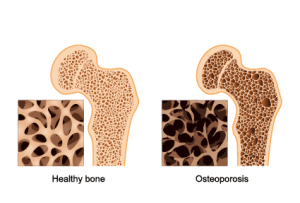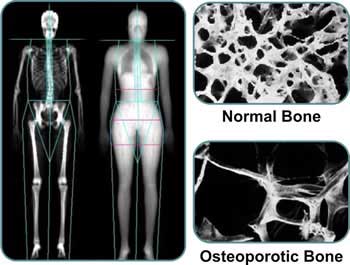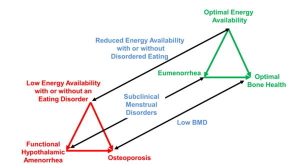Bone density is a medical measure of the amount of minerals per square centimetre of bone. It is a key measure to help determine the strength or fragility of the bone. Poor bone density is an indicator of osteoporosis.
Bone density is a particular issue in female athletes as oestrogen levels drop, which leads to lower mineral counts. Calcium and vitamin D are of particular importance. Female athletes need to ensure they consume the right amount of calcium for bone development and either produce vitamin D through sun exposure, or take a vitamin D supplement. Low bone density is more likely in female athletes who have an eating disorder or are post menopause.
Female athletes with eating disorders are more likely to not consume appropriate amounts of calcium and other minerals needed for skeletal health. A lack of these minerals leads to fragility of the bone and makes fractures more likely to occur. If the athlete is post menopause, then their oestrogen levels are lower and bone density decreases.
A decrease in density causes the bone to become more fragile, making the athlete more prone to fractures. This may affect female sport participation as high intensity and contact sports can cause the female athlete to suffer fractures. Bone density can be improved through a proper diet, weight bearing, and resistance training.
This is the last of the factors that make up the female athlete triad. It is important to understand that an athlete’s diet, energy intake and eating disorders, will affect their mental cycle, iron levels and bone density levels. Though the diet may change from day to day, affects on the menstrual cycle may not appear for a month, and affects on the skeletal system may take a year or more.


